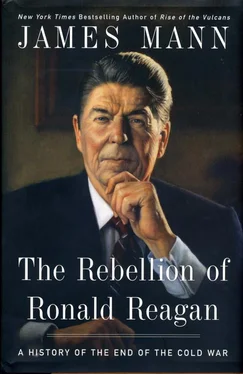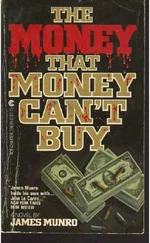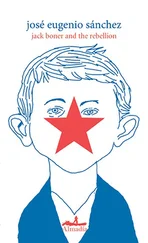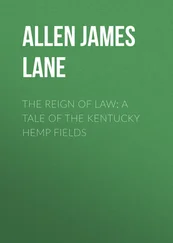During the previous four years, Gorbachev had met Honecker several times and urged him to proceed with reforms. “It was as if I had been speaking to a brick wall,” Gorbachev later wrote. During his visit to East Berlin in October 1989, the Soviet leader thought Honecker seemed as if he were in a trance. When the two men met privately for three hours, Honecker simply denounced the protests and listed the successes of his own regime. Afterward, in a session with other East German Communist Party leaders, Gorbachev issued a vaguely worded warning: “History punishes those who come too late.” 7
Before the October 9 demonstrations in Leipzig, East German authorities put thousands of armed police into formation and were considering the use of force. The city’s illustrious orchestra conductor Kurt Masur and local Communist Party officials broadcast an appeal for dialogue and restraint. That succeeded in avoiding bloodshed, but not in stopping the demonstrations. On the following Monday, October 16, more than 150,000 protesters assembled in Leipzig.
Two days later, after a Politburo meeting, Honecker resigned from the job of party secretary, which he had held for eighteen years. East Germany’s other Communist Party leaders had been secretly talking for weeks about the need for someone new at the top. Their choice, Egon Krenz, was fifty-two years old, a quarter century younger than Honecker, but he hardly represented far-reaching change. Groomed as Honecker’s protégé, he had risen through the same career path as his predecessor, starting in the Free German Youth, the Communist youth organization, and eventually becoming the Politburo member in charge of the security apparatus. Krenz immediately set out to craft some new program with a semblance of reforms that might defuse the unending demonstrations. Over the next three weeks, however, the protests grew to hundreds of thousands of people on the streets of Leipzig and East Berlin.
Krenz also tried one other tack: to enlist new support from the Soviet Union. He had the right credentials. At the beginning of his career, he had spent three years in Moscow attending the party school of the Communist Party Central Committee. He spoke fluent Russian. He had met with Gorbachev on several occasions, first on the day after Gorbachev had become Soviet leader in 1985 and again at the Warsaw Pact sessions where Gorbachev reported to Eastern European leaders on his meetings with Reagan.
Krenz flew to Moscow and on November 1, 1989, sat down for a four-hour conversation with Gorbachev. In it, he made a plaintive appeal, using a crude familial metaphor. “Mikhail Sergeyevich, do you still stand by your paternity?” Krenz asked. Gorbachev, baffled, said he didn’t understand the question. “You [Soviets] are basically the father of the German Democratic Republic [East Germany],” Krenz continued. “The German Democratic Republic is a child born out of the victory of the Soviet army over German fascism. Do you still stand by your paternity?” 8
“Egon, how can you ask such a question?” replied Gorbachev. He told Krenz that the Soviet Union still supported East Germany. In fact, said Gorbachev, he had spoken with George Bush, British prime minister Margaret Thatcher, and French president François Mitterrand—all had assured him that German reunification was not on the agenda. Krenz left the meeting convinced that Gorbachev was a friend and ally who wanted only the best for the East German regime. In an interview many years later, Krenz said of Gorbachev bitterly, “My mistake was that I trusted him.” 9
Back in East Berlin, however, the unrest continued, and Krenz failed in several increasingly desperate attempts to stop it. At the beginning of November, he announced a package of reforms, including an end to compulsory military service and tolerance of dissent. His initiative had little impact. On November 4, close to 500,000 demonstrators turned out in East Berlin’s Alexanderplatz, carrying signs that called for free elections and reassignment of the Stasi, the East German secret police, into production work. Two days later, 750,000 people took part in demonstrations throughout East Germany. On November 7, the East German cabinet resigned, and within twenty-four hours, the Politburo members also stepped down. As he appointed some replacements, Krenz also told the country vaguely that there would be free democratic elections in the future. 10
With continuing tumult in the streets and uncertainty over the changes in the leadership, it was virtually inevitable that the weakened East German regime would make a mistake. It did. On the afternoon of November 9, the Communist Party Central Committee, again seeking to regain at least a modicum of public support, decided on a far-reaching reform of the travel rules. The idea was to allow East Germans to travel directly to West Germany, without going through third countries such as Czechoslovakia. What Krenz and his aides envisioned was an orderly process. The rules were aimed at allowing emigration, not necessarily to open the border for day trips, tourism, or other unfettered back-and-forth. The border guards would have required East Germans to show passports, and while they would have been vastly more permissive than in the past, they would still have regulated the outflow. “It was supposed to happen in a very Prussian way, a very exact way,” maintained Krenz many years later.
The new rules were supposed to take effect the following day, on November 10. At the end of the afternoon, however, Krenz handed over the new rules to another senior Communist Party official, Günter Schabowski; Krenz said Schabowski could tell the news media about the new development but did not brief him carefully about the details. Schabowski still hadn’t read the new rules closely when the press conference began. The written announcement for the press, dated November 10, said the change would then go into effect “immediately.” But when reporters asked Schabowski when the rules would take effect, he looked quickly at his papers, missed the November 10 starting date, and answered, “Immediately.”
His answer was broadcast on East and West German television stations and elsewhere around the world. He left the impression that there would be no more restrictions on passage through the Berlin Wall from that moment forward. Immediately, huge crowds of East Berliners rushed to the checkpoints at the Berlin Wall. In the vacuum of leadership, the border guards didn’t know their instructions and, for hours, were unable to get any guidance. Gradually, they let more and more East Germans pass through. At first, the border guards stamped each person’s identity papers; within a short time, they stopped doing even that. Their confusion and the East German government’s indecision were decisive. After twenty-eight years, the Berlin Wall was open.
Krenz didn’t know what to do. He did not want to resort to force; he had issued an order a few days earlier instructing border guards not to use weapons against demonstrators. “I tried to call Gorbachev that same evening, but I couldn’t get through,” said Krenz in an interview for this book. The following day, a distraught Vyacheslav Kochemasov, the Soviet ambassador in East Berlin, called Krenz, demanding to know what he had done and why. The Soviet Union had always taken the position that East Germany was not the ultimate legal authority over the borders between East and West Berlin because the city was still under the four-power agreement of the Soviets, Americans, British, and French. Krenz told the Soviet ambassador that once the outflow started, he had decided not to do anything that could jeopardize human life. Kochemasov asked him to write a telegram to Gorbachev immediately explaining what had happened. Krenz did. Two hours later Kochemasov called back. “Comrade Egon” he declared, “in the name of Mikhail Sergeyevich Gorbachev, I would like to congratulate you on the courageous step you have taken.” 11
Читать дальше












